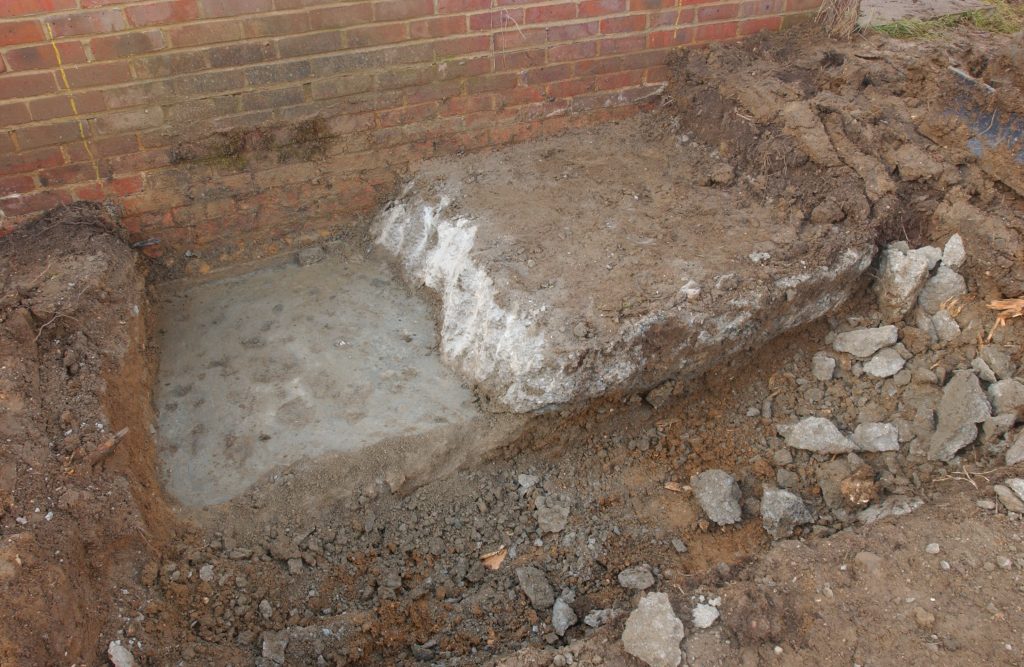Tilting the Balance – 7 ways our justice system favours conviction of the innocent over acquittal of the guilty
The Law Commission’s ongoing review of the criminal appeals system completed its pre-consultation phase last week, examining a raft of proposed reforms to the way our State institutions respond to potential miscarriages of justice. I was immediately struck by a well-intentioned but highly questionable passage in the Law Commission’s Issues Paper (paragraph 2.8) which would have seemed unexceptional had I read it as a young law student 15 years ago, but which now stands out like a sore thumb:
“Criminal justice in England and Wales prioritises acquittal of the innocent over conviction of the guilty”.
This is a timely review, coinciding with the recent exoneration of Andy Malkinson, but it should not – indeed cannot – proceed on the assumption that the system is already weighted in favour of defendants. It is not. The Court of Appeal needs to adjust the way it approaches cases to reflect this fundamental and systemic imbalance. The thrust of my response to the Law Commission’s Issues Paper is that this can only be achieved through legislative reform that dramatically broadens the scope of the Court of Appeal’s powers. Whilst the review largely focuses on the post-conviction stage, it is important to recognise that the seeds of injustice are often sown long before a case ever reaches the Courts, falling from the moment of arrest itself.
I have picked 7 examples that serve to demonstrate how the dice have been loaded to make it easier to secure convictions in England and Wales. These imbalances need to be rolled back if we don’t want innocent people to be caught in the net.

1. Majority Verdicts
The introduction of majority verdicts in the late 60s has tilted the balance heavily towards the prosecution, making it easier to convict the innocent when the evidence leaves some jury members uneasy about weaknesses in the case. If two members of the panel do not believe the conviction can be proven, then that should amount to a reasonable doubt. As I argue in my response to the Law Commission, a requirement for unanimous verdicts should be reintroduced, if not in all cases, then certainly where the potential sentence could be greater than 10 years.
2. Circumstantial Convictions
It cannot be right in this day and age that a murder conviction can be sustained without forensic evidence. If we are sending someone to prison for life, then there should be absolutely no doubt in our minds that that person is in fact guilty. Given the risks and impact of wrongful conviction, the vast majority of jurisdictions set a much higher threshold for conviction in homicide cases than we do here in England and Wales. The Government should legislate to prevent convictions based upon circumstantial evidence alone, in indictments subject to mandatory minimum terms.
3. Custodial Remand
With year-on-year cuts to legal aid for the past 15 years, preparing a defence is hard enough as it is without having to do so from behind bars on remand. Courts currently place more weight upon predictions of perceived risk than they do upon equality of arms or due process. The psychological impact alone can be devastating, particularly for defendants like myself who have never been to a prison before. I vividly recall the fear and shock of the whole experience, which left me feeling disoriented and unable to function on a day-to-day basis. Cut off from the outside world, I had very little sense of what was going on, and the reality of my detention made effective communication with my legal team extremely difficult. The ordeal of being transported from the prison to the courtroom each day for 6 weeks was not only exhausting – emotionally and physically – but incredibly dehumanising.
For the vast majority of people, less restrictive and traumatising alternatives are available, such as HDC, electronic tagging, or – if custody is absolutely essential: remand to an open prison rather than a closed one. I propose introducing a presumption for bail in all cases unless there is clear evidence of risk, or the person has committed an offence whilst on bail. Whilst I was eligible for bail myself, I simply didn’t have the financial means to meet the amount set by the judge. The Courts should avoid setting onerous bail figures that price defendants out of justice.

4. Courtroom architecture
Jurors faced with a defendant flanked by guards and placed behind a glass screen cannot help but prejudge his or her culpability, undermining the presumption of innocence. I remember the judgmental looks of the jurors on the first day of my trial, which left me feeling deeply demoralised and with little confidence that the process about to unfold would be truly impartial. In a study by the University of Western Australia, “60% of jurors delivered a guilty verdict when the defendant was confined to a glass dock, 47% when located in an open dock, and 36% when they were placed next to their lawyer” (John O’Connor, ‘Time to destroy courtroom cages?’, Inside Time, August 2015). Most courtroom docks are now equipped with glass screens as standard, without much thought as to the effect that this very real separation of the defendant from the trial has not only on the jurors and witnesses, but on the defendant themselves. The actual experience of being sat behind a screen only adds to the sense of alienation one feels as the subject of proceedings.
The design of our courtrooms is highly influential and should be reconfigured to reduce the potential for bias and trauma. It not only has an impact on the outcome of a trial, but heightens the adversarial nature of the process, making the trial more combative and psychologically damaging for participants.
5. Pre-charge Detention
When it comes to pre-charge detention, the police are empowered to hold individuals for up to 36 hours without a court order, (Police and Criminal Evidence Act 1984, s42; Serious Organised Crime and Police Act 2005, Schedule 7, s43(7)) “ample time for the suspect to be psychologically ‘softened up’” as Professor Mike Maguire puts it (‘The Oxford Handbook of Criminology’, 5th Edition (2012), Ch. 28, p. 848). PACE guarantees those in custody certain rights, including free legal advice and basic standards of treatment (Police and Criminal Evidence Act 1984, Code of Practice C), but these do little to mitigate the coercive experience of detention and interrogation in an environment “deliberately denuded of psychological supports” (Maguire, op. cit. p. 848). The process induces varying degrees of trauma in detainees which the police often exploit to their advantage. Practices like selective disclosure or using closed and leading questions keep suspects off-balance. Vulnerable interviewees who resist the temptation to make deals with the police may be susceptible to suggestibility and difficulties with, or distortions in, memory according to David Hockey (‘The problem with memory’, Inside Time, March 2014) – which can then be used against them at trial.
The abolition of the right to silence (Criminal Justice and Public Order Act 1994), once a cornerstone safeguard for suspects, has eroded civil liberties and increased the pressure on suspects to speak – without having any impact upon conviction rates. In practice, PACE has “shifted unwanted police behaviour” rather than reducing it, argues Professor Maguire (op. cit. p. 851) and has enhanced their structural advantage.

6. Police Performance Targets
As Professor Robert Reiner explains, the police have been subjected to ‘market disciplines’ ever since The Police and Magistrates Court Act 1994 (‘The Policies of the Police’, 3rd Edition, 2010). National Police and Crime Plans, issued at the start of each financial year (Police Act 1996, s.6ZB; Police Reform and Social Responsibility Act 2011, ss. 5 and 7), place pressure on the police to meet government targets which, as Mike Maguire puts it, penetrate “the day-to-day operation of discretion”. The politicisation of policing can be seen – for example – in the Secretary of State’s power to direct the police, in consultation with elected Police and Crime Commissioners, to “take specified measures” where he or she feels “any part of a police force is failing to discharge any of its functions in an effective manner, whether generally or in particular respects” (s.40 Police Act 1996).
While numerical targets, under the Policing Performance Assessment Framework, were scrapped by Theresa May in 2010, Priti Patel reintroduced ‘directional targets’ through the National Crime and Policing Measures in 2021 (‘Beating Crime Plan’, pp. 46 – 47), assessing performance against police recorded crime.
The problem with a police force reoriented towards performance measurement and motivated by competition is that officers can quickly lose sight of what justice actually requires. To meet targets and improve ‘performance’, it doesn’t matter as much whether they have the right suspect, merely that they have a suspect. In their eagerness to charge someone within the detention time limit, evidence can be fitted to the individual by “selecting, interpreting, and sometimes even ‘creating’ facts which bear little relation to reality” (Maguire, op. cit. p.855).
Several witnesses at my trial have revealed that the police told them I was ‘guilty’, or ‘definitely responsible’ before taking their statements – in many cases before I was actually charged – thereby influencing the testimony they were supposed to be impartially collecting.
7. Police impartiality
The police are expected to follow “all reasonable lines of enquiry, whether they point towards or away from the suspect” (Criminal Procedure and Investigations Act 1996, Code of Practice under Part II, s3.5), but interviewers are prone to avoid this, “frequently looking to interviews to confirm police suspicions” (Maguire, op. cit. p. 850). The police want to build their case, not demolish it – and are incentivised to do so as a result of National Policing Plan targets. Against the clock and with limited resources, they will be inexorably focused upon lines of enquiry that fit their own theories. There is, consequentially, an all too real danger that vital exculpatory evidence will be missed and a miscarriage of justice perpetrated.
The fact that defendants must rely on the same police who arrested them to then pursue all lines of enquiry in what is fundamentally an adversarial process is less than satisfactory, and the most common cause of error. Defendants do not have the ability to send in their own scenes of crime team to hunt for evidence at the same time as the police. They must rely on the State to obtain that evidence for them. If the State misses that evidence, fails to store it correctly, or inadvertently destroys it, then the defendant has nowhere else to turn.
In my own case it became apparent some years after trial that Scenes of Crime Officers had incorrectly bagged key evidence from the burial site, which made it impossible to subject it to relative dating techniques – depriving me of a potential defence given the 6-month indictment window. As an expert Geologist confirmed:
“the 3rd edition of the MOLAS site manual, which was published in 1994… refers to storing mortar samples in polythene bags, whereas the SOCO samples viewed by us were stored in paper bags, which would not have prevented continued carbonation… It appears that no measures had been taken to protect the SOCO samples from further carbonation thereafter, indeed they were in paper bags and stored internally, so that new or further carbonation in storage would be anticipated… Even the samples considered representative of the four layers that were taken be SOCO were first opened in the forensic laboratory by myself… and, to the best of my knowledge, were never investigated by that laboratory… had they been examined, no meaningful assessment of carbonation and its potential indications would have been possible, as no measures had been taken to prevent carbonation of the samples after they were taken and during subsequent transit and storage”

Indeed, the crime scene was fatally compromised before any defence expert could have been dispatched to the scene. As the defence expert describes:
“Clearly it would have been beneficial for me to have visited the site before the SOCO work was back-filled… Certainly, on 25 June 2010, I was expecting to view the open excavation and went equipped to drill core samples. It had been intended to drill core samples from an undisturbed portion of the concrete area, with each core sample being drilled through all the various layers. However, on arrival at the site, it was apparent that the area had been completely excavated by the scenes of crime officers… then roughly back-filled with the excavated materials… the surfaces of the debris were left exposed to the atmosphere for long enough for varying degrees of carbonation to have occurred. Thus, the prospects of finding relevant evidence of carbonation patterns were inadvertently compromised by the thoroughness of the SOCO operation”
These problems extend to case-construction in which safeguards are often “ignored, subverted, or negotiated by the police… to secure… the creation of successful prosecution cases” – as Professor Tim Newburn identifies (‘Criminology’, 2nd Edition, p. 574). In theory, the CPS should be able to pick up on this when they assess the ‘realistic prospect of conviction’ in each case. The CPS are in a weak position however, because they can only go on what the police have picked up on, and how they then present the facts to them.
I speak from experience: the crime scene mishap was not an isolated incident. The police subsequently failed to secure or disclose the existence of potentially exculpatory evidence that the victim, my father, was seen alive several days after they were claiming he had been killed on 5 September 2009. Three police officers, including the investigation lead, called for a Serious Case Review by Buckinghamshire County Council some 3 months before my trial without informing us. The panel met 3 times during my trial, revealing evidence that directly contradicted the case being presented by the prosecution. Neither the convening of these panels, nor the evidence revealed through them was ever disclosed to the defence. It certainly looks like inconvenient pieces of evidence were swept aside or ignored whenever they didn’t fit the narrative.
Compounding this failure, the police did not follow up on leads indicating that my father was in a meeting with Council officials on 8 September 2009. They had an opportunity to at least notify us of the lead so that we could make our own enquiries before I lodged an appeal against my conviction on 29 September 2010, but this never happened. I only discovered the news a year after my trial, quite by accident – thanks to an article in the Guardian – but by this point it was already too late:
“Due to the length of time, some of the information you requested is no longer accessible, and the people who worked here at that time are no longer available for me to contact”.

As a direct result of the police’s failure to secure this vital evidence, the detailed records of that meeting between the victim and the Council had been deleted. Sadly, this isn’t the only example of disclosure failings that have come to light since my trial. It does not paint a pretty picture.
In a bid to prevent guilty people walking free, due process protections have been steadily eroded. The inevitable structural imbalances highlighted in this article have tilted the balance too far in the opposite direction, creating a disproportionate risk of convicting the innocent. This must be recognised and addressed not only by the Law Commission, but by our government when the opportunity comes for corrective legislation.
Mark Alexander, LL.B. (Hons), LL.M. AKC
Mark is a former Rugby School and King’s College London student who was imprisoned in 2010 at the age of 22. He has since completed both his undergraduate and postgraduate law degrees in prison with the University of London, as well as achieving Grade 8 Piano and a DipABRSM in singing. Mark received the Longford Trust’s Patrick Pakenham scholarship award for law in 2016, and is a member of Convict Criminology and the Prisoner Policy Network at the Prison Reform Trust.




Your Thoughts